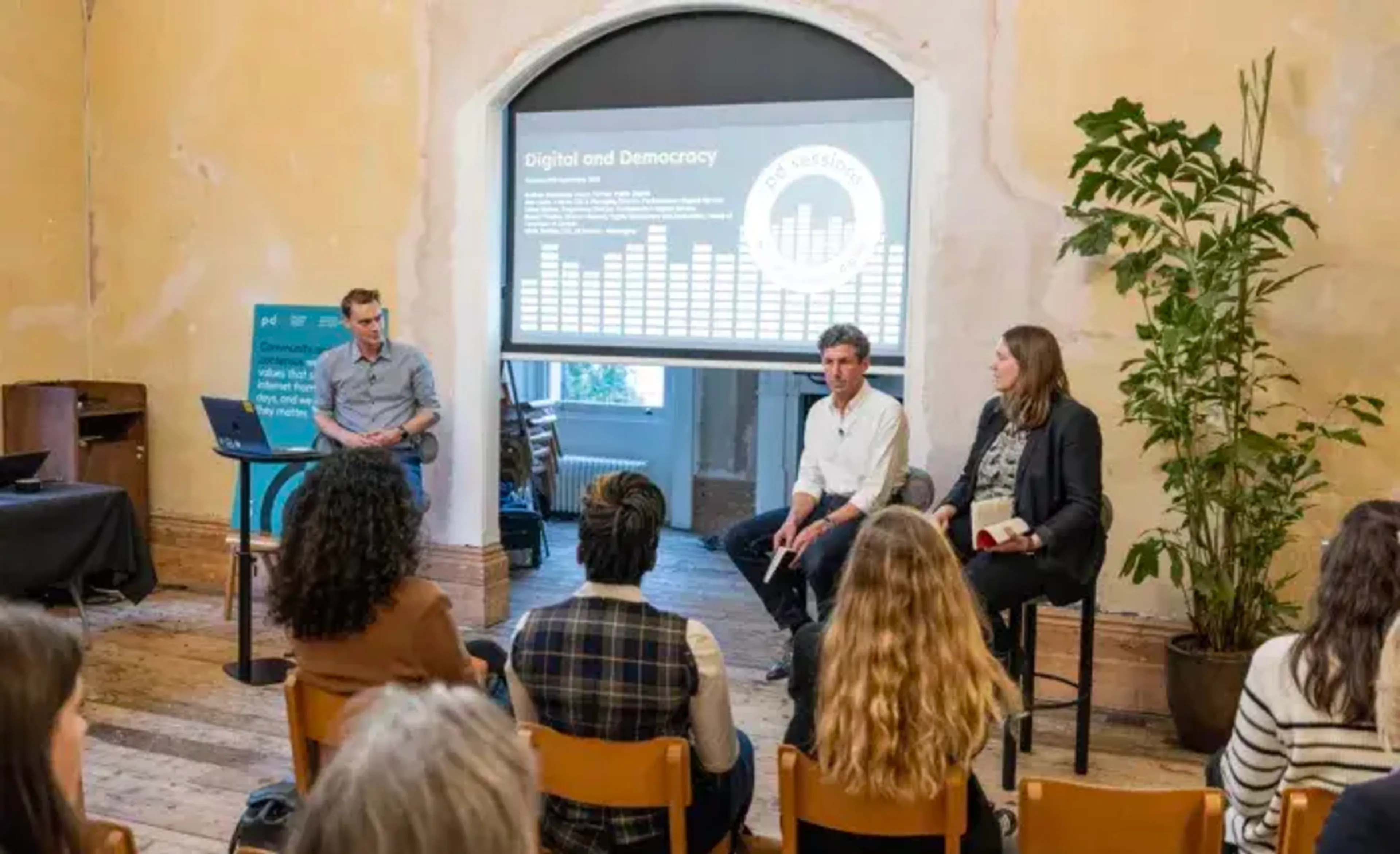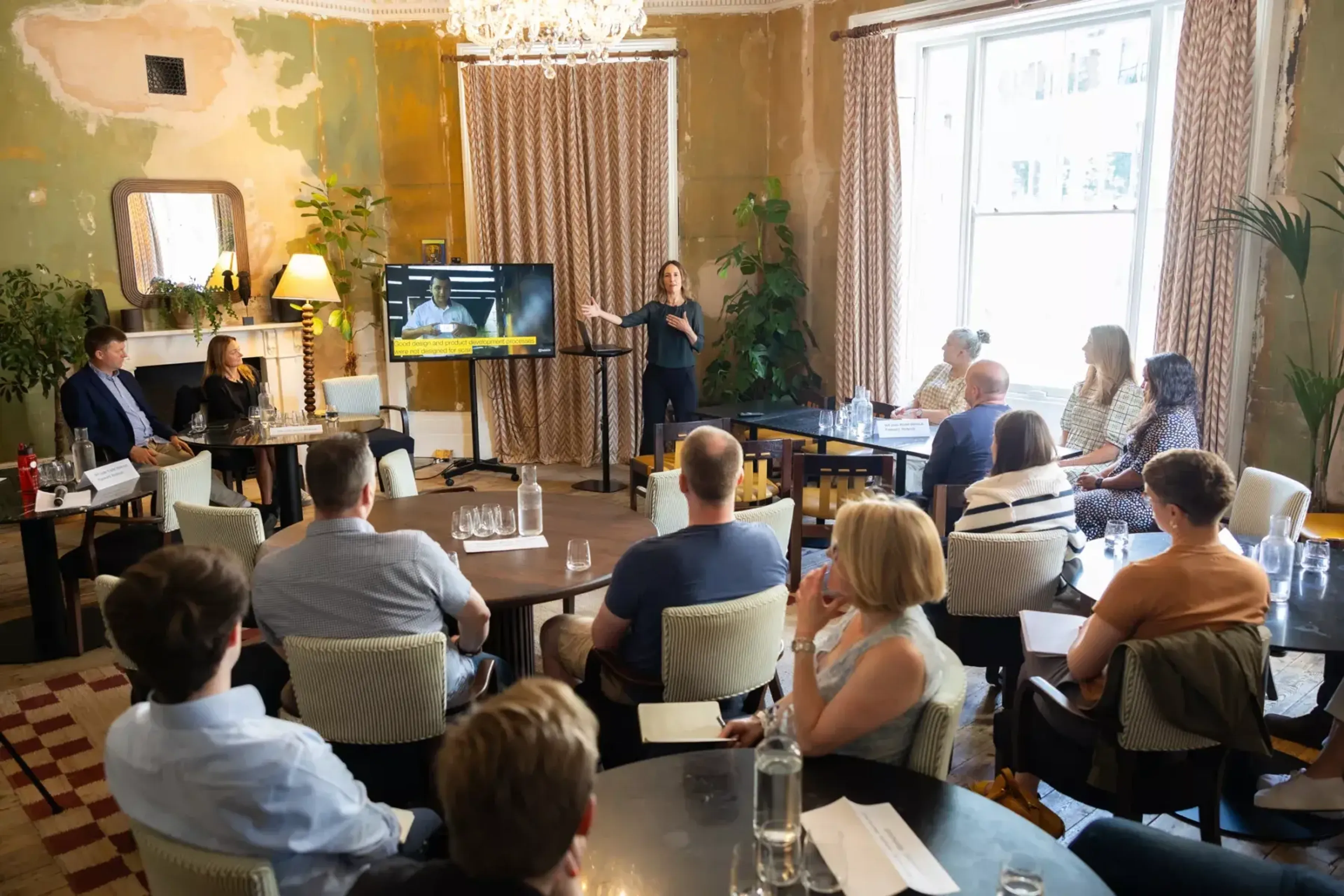
PD Sessions: The Service Organisation
Last Wednesday Public Digital hosted its first PD Sessions event presented by Kate Tarling with PD’s Lara Sampson and Tom Loosemore. The event was the first in a series which aims to broaden our conversation about digital and organisations beyond our clients and in doing so generate a community of practice.
Kate Tarling is an advisor, coach and consultant who specialises in services and works with governments and the private sector. She brings expertise from senior leadership roles in government and the service industry.
Her new book, The Service Organisation, provides a framework for how large organisations can alter their working practices in order to focus holistically on making better services by default, and therefore become true ‘service organisations’.
The challenge of service improvement at scale
Kate began the session by describing how achievable the process of service or product improvement can be when working on a small-scale operation within a small team. If the designers of a service are present on the ground when a service is rolled out, they can see first-hand how well a service is functioning and what its problems are.
At scale, however, improving a service is a much bigger challenge.
In a larger enterprise, where numerous different teams work on separate functions of the service, from finance to product management to commercial, the emergence of silos and the complexity of the organisation mean change becomes harder to implement, and problems with the service become harder to solve.
Particularly in government, this can be exacerbated by the tendency to manage the risk that comes with change through pinning accountability on individuals.
Helping a large organisation improve its services is not an abstract idea. In fact, the problems that exist within an organisation for both its users and its staff will be already apparent to at least one person in that organisation. There is likely to already be a desire to connect the work of teams to wider organisational goals, like financial drivers or user needs.
Despite this, the problems identified by an organisation are often treated as disparate.
The fundamental disconnect between teams involved in different organisational functions means that, despite providing the same service, these teams are not all working together. The core problem will be with the service itself, but without organisational functions working together, it will only be addressed as a set of disconnected problems.

Looking at service performance
While the issues described above are universal to large organisations, it is nonetheless possible to take a holistic, cross-organisational approach to problem-solving.
One way to do this is by orienting an organisation around service performance, rather than disparate functions. Examining the end-to-end service of an organisation - how well it performs, the areas where it fails to perform - will offer an insight into how well the organisation is working as a whole.
This sort of approach forces an organisation to view itself from the perspective of staff and users. How easy is it for them to do whatever they need to do? Are the right things happening to enable the service to work smoothly?
Asking these questions enables an organisation to work out what good looks like. Once you know that, you can steer towards achieving it better.
Thinking about service performance will give you an indicator of what the operating model could look like.
Services are not operating models on their own. But thinking about service performance will give you an indicator of what the operating model could look like.
HM Passport Office used this approach when transforming their passport applications process. Where before policy makers had been leading logistical decision-making without considering the impact on other functions in the service journey, the team looked instead at service performance. Examining the service end-to-end, they produced a service journey map which showed clearly what the impact of any policy change would be, and who it would affect within the system.
Likewise, when the Department for Education was considering how to make its service better for teachers, their focus on service performance prompted them to rework the structures of their teams. The result was a system in which people were swapped between teams, with policy-makers joining teams of product managers, and developers working alongside ministers. This not only created cross-functionality, but exposed teams to the reality of making difficult decisions in an environment with competing priorities.
Similar results can be seen in large organisations within the private sector. A focus on service performance also prompted the BT Group to reimagine the structure of their teams, orienting teams around the end-to-end service and giving them autonomy to work out how to make improvements. They also made changes to their financial structures, eradicating budgets organised by separate silos and instead integrating them into one place.
In all these examples, the organisations looked horizontally across individual service performance, and then examined the vertical changes needed to make the service better.
The need for shared goals
Orienting an organisation around its services is a departure from the norm.
While dividing an organisation into separately focused functions can be effective, and often necessary, the word separate betrays the limitations of this system. If the goals of these different teams are entirely independent from each other, something isn’t working. To deliver the best services, teams should all to some extent be focused around service performance.
In order to make this kind of change happen, an organisation must identify the barriers to change. What are the main forces which keep the current culture in place?
This is an important question to ask because the best way to make change happen is to work with the grain, rather than against it.
There are lots of places to start. First of all, look at how people in the organisation think about performance, how they understand the service. Ask them what good looks like, and what they are working towards. And overall, what is the flow of work across the organisation. What problems are people facing?
Starting with these questions helps an organisation gear towards improving products and services. In other words, it will set them on the path to being true service organisations.
PD Sessions is a participatory events series which aims to broaden our conversation about digital and organisations beyond our clients and in doing so generate a community of practice. Subscribe to hear more about future events.
